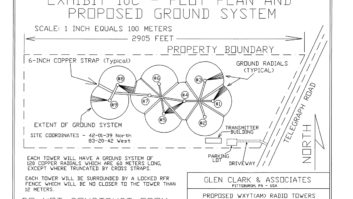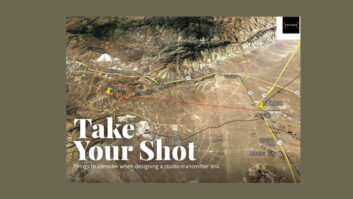Disagreement Continues on How Best to Address the Digital Music Mess, With IBOC at Ground Zero
Everyone agrees that the music recording industry has traveled a rocky path into the digital domain. Beyond that, however, concurrence is scarce.
Some feel that this is largely the industry’s own fault for ignoring earlier warnings, and releasing unprotected digital content on CDs for over two decades. Others say that blame is misplaced, and at least some of the industry’s reduction in sales is due to other, non-digital ills. Still others claim that the evidence RIAA cites for decreased sales is misleading, resulting from creative accounting rather than real losses.
Even if you put faith in the RIAA’s claim that digital technologies have reduced record sales, the spin-variations on the same data by different industry sectors are fascinating. For example, industry pundits claim that the music industry’s “business model is broken,” while the RIAA present it as a case of “market failure” and legalists cite a “lack of parity” in current copyright law.
This is important for more than just its rhetorical diversity. Such variety in characterization inevitably will lead to widely divergent proposals for solutions, and that’s just what is taking shape right now regarding digital radio’s relationship to the music business.
Damage control
As it has done with the emergence of other new technologies, the RIAA is taking the opportunity of IBOC’s deployment – some would say belatedly – to call for new regulatory relief.
In its current pleadings, the RIAA sets the table by citing that the United States is the only developed country in which free-to-air (FTA) radio airplay does not generate performance royalty payments to recording artists and publishers. (Only composers are paid for airplay of their songs in the U.S., with no musicians or music publishers receiving compensation for the airing of recordings of those songs.)
Of course, this specific exemption for American FTA radio broadcasters has historical tradition dating to 1971 (when sound recordings were first received copyright protection under U.S. law), and is based on the thinking – agreed to by record companies at the time – that radio airplay leads to increased record sales. Thus a quid-pro-quo “barter” relationship that benefits both parties without exchange of funds was established.
In the intervening years some variations have been introduced due to technological changes. Today, a three-tiered arrangement has been established for electronic distribution of copyrighted music, which can be generally characterized as follows:
-
Exempt: As in the FTA radio example above, no compensation is paid to copyright owners, and the content is used by broadcasters under compulsory license.
-
Ephemeral (or “non-interactive digital”): Compensation is paid by service providers for use of copyrighted content in real-time transmissions under statutory license. This applies to satellite and Internet radio in the U.S. today. (Other limitations to usage may also apply under this license, such as the number of consecutive selections allowed from a particular album or artist, and prohibitions/limitations on recording.)
-
Transactional (or “interactive digital”): A higher level of compensation is paid, based on bilateral negotiations, for the purchase of an electronic copy of copyrighted content. This applies today to music download services. Other rules covering extended usage beyond the device that the music is downloaded to may also apply under these licenses (e.g., whether or how many copies can be made to CD-R, portable devices, etc.)
Broadcasters have assumed that IBOC digital radio would fall under the first category above, but the RIAA is asking for it to be considered differently. How this will be resolved is the subject of much current debate, and will be critical to the eventual resolution of the IBOC content-protection discussions becoming known in legislative and regulatory circles as the “audio flag” (see The Big Picture column in our March 1 issue).
A different business
Another premise of the RIAA recent arguments describes the different relationships between radio and television broadcasters and their respective content providers. Consider that in the television world, content owners receive the bulk of their revenue from the purchase of broadcast rights by TV broadcasters. Any compensation from the sale, rental or download of recordings of this content is secondary.
In contrast, as noted above, record companies do not receive compensation for the broadcast of their works on U.S. radio, under the assumption that the increased record sales resulting from such free airplay will alone produce a viable income stream.
Today the RIAA fears that with IBOC – along with some recently released satellite radio devices – such airplay could instead thwart retail music sales (including the nascent legitimate download business), if it provided consumers with a new ability to easily capture music from the broadcast stream. In this case, the basis of earlier agreements will have been violated and a new music-licensing scheme for radio broadcasters will be required, the RIAA asserts.
Forks in the road
Among the diverse views toward a solution is an approach that proposes changing U.S. copyright law to include a levy for FTA performance royalties, and a possible increase in music-licensing fees for satellite and Internet radio. The RIAA feels likelihood of success along this path is low, given strong opposition anticipated from broadcasters.
Instead, the RIAA proposes an arrangement that would keep IBOC, satellite and Internet radio broadcasts essentially ephemeral by regulation, using the audio flag and its enforcement rules to limit recording devices’ capabilities and prevent redistribution of broadcast content via the Internet, removable media or other devices.
Ideally, the RIAA would like these rules also to include limits on searching and automated copying, so that individual songs cannot be separated from surrounding content without obtaining the appropriate, higher-level (i.e., “interactive” or transactional) license.
To enable these limitations the RIAA proposes the use of random time offsets between audio content and its associated metadata, and a requirement that recording devices make all radio recordings in no shorter than 30-minute increments, which could not be subsequently edited. These rules would prevent consumers from permanently saving the content in a broadcast stream as discrete song files – at least via any simple or automated method. (See our Feb. 1 column.)
A further divergence of opinion exists over whether the broadcast, music and consumer electronics industries might generate their own voluntary accords on such matters, or whether government involvement is necessary.
Then there is the entire matter of how the audio flag would work – assuming it were agreed to by the industry (or mandated by government action).
This would necessitate a lengthy process that included decisions on how to insert the flag in the IBOC stream in a backward-compatible, standardized and interoperable fashion; what rules, content protection systems and/or other enforcement technologies would be accepted for use on flagged content; and how such acceptability would be determined (criteria, process, robustness level, liability in case of failure/hacks, governing body, etc.).
This also assumes that Congress will grant the FCC jurisdiction to manage such “downstream-of-the-tuner” technologies, which as of this writing it has not yet done, and which has kept the DTV broadcast flag off the books even after its completion of the abovementioned requirements over the course of several years.
Thus many elements would need working out before an audio flag system could be put in place. Other solutions might take less time and result in more favorable and flexible conditions, but they would require parties that are currently far apart in their positions to come to quick consensus.
Finally, broadcasters should recall that they may have more than one dog in this hunt.
Radio operations already inhabit distribution modes beyond FTA broadcasting, and therefore operate under multiple corresponding licensing regimes for the same content. To wit, many radio operators also stream their on-air and/or other programming on the Internet, and some even offer paid downloads of songs aired (e.g., WMMR’s Digital Music Store or the XM+Napster service).
Some have claimed that the audio flag process is just RIAA’s attempt to leverage radio broadcasters’ investment in new technology to the music industry’s advantage. Others feel it is an appropriate, proactive response to another potential threat to the music industry’s survival.
Whatever your view, it would be wise to keep a broad and careful watch on this important, ongoing debate. It may affect your future business on numerous levels, and if the private sector doesn’t produce an acceptable solution, the U.S. government may provide one for it.












